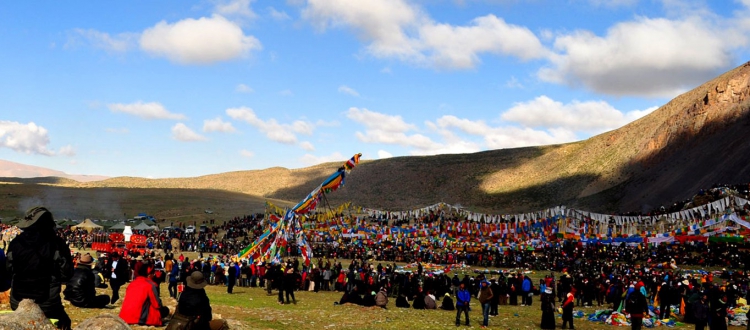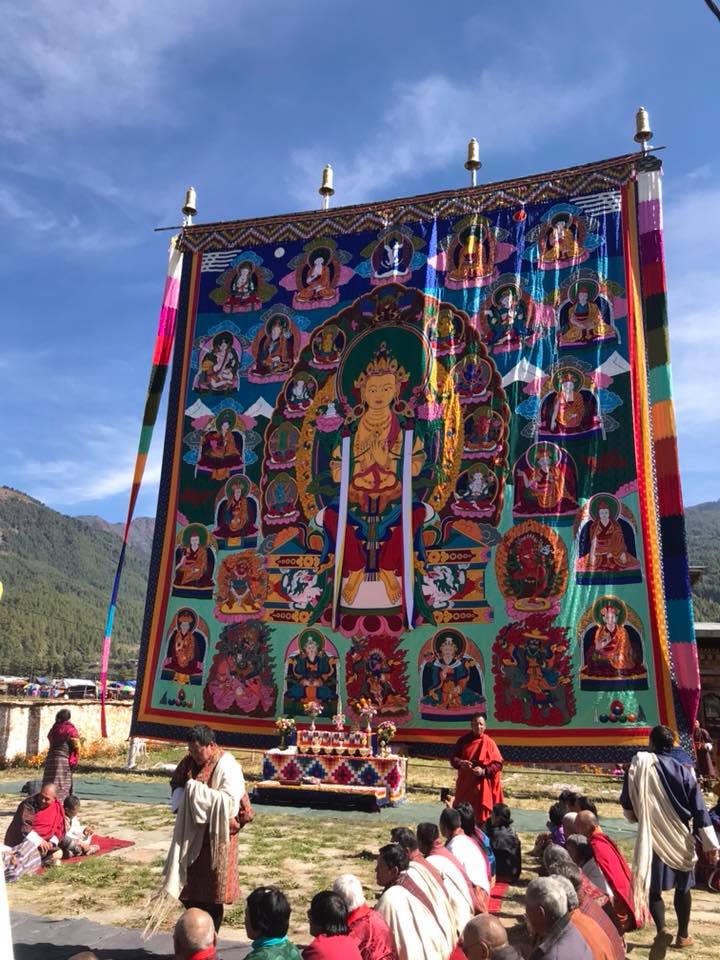Tibetan Calendar and Festivals
There are different Tibetan Festivals which are celebrated in Tibet. Tibet is rich in culture and tradition. All people enjoy festivals together to maintain harmony and love among one another.
Table of Contents
Buddhist Calendar in South Asia
The Buddhist calendar is a set of lunisolar calendars primarily used in mainland Southeast Asian countries of Cambodia, Laos, Myanmar, and Thailand as well as in Sri Lanka for religious and official occasions.
While the calendars share a common lineage, they also have minor but important variations such as intercalation schedules, month names, and numbering, use of cycles, etc.
In Thailand, the name Buddhist Era is a year numbering system shared by the traditional Thai lunisolar calendar and by the Thai solar calendar.
The Southeast Asian lunisolar calendars are largely based on an older version of the Hindu calendar, which uses the sidereal year as the solar year. One major difference is that the Southeast Asian systems, unlike their Indian cousins, do not use apparent reckoning to stay in sync with the sidereal year.
Instead, they employ their versions of the Metonic cycle. However, since the Metonic cycle is not very accurate for sidereal years, the Southeast Asian calendar is slowly drifting out of sync with the sidereal, approximately one day every 100 years. Yet no coordinated structural reforms of the lunisolar calendar have been undertaken.
Tibetan Calendar
The Tibetan system works with a 360-day lunar year and cycles of 60 and 180 years. As a year is longer than 360 days, some days are doubled, and others are skipped. To make the calendar fit the observations, occasionally even an extra month is introduced.
At the birth of a child, the charts would be checked to see if any special rituals were required to ward off negative planetary influences. Also a “death chart” would often be prepared to decide the exact performance of the funeral. Improper performance could result in problems for the family, as well as for the deceased.
Some of the festivals are listed below:
- Samye Cham Dance Festival
- Butter Lantern Festival
- Tsurphu Cham Dance Festival
- Jambay Lhakhang Festival
- Saga Dawa Festival
- Drigung Til Cham Dance Festival
- Tashilhunpo Thangka Festival
- Universal Prayer Day
- Yangpachen MonasteryChokor Duchen Festival
- Cham Dance Festival
- Gyangtse Horse Racing Festival
- Ganden Thangka Festival
- Nagqu Horse Racing Festival
- Shoton Festival
- Drepung Monastery Lhoobhum Festival
- Drak Yerpa Monastery Cham Dance Festival
- Damxung Horse Racing Festival
- Bathing Festival
- Ongkor Festival
- Buddha’s Descent Day
- Kongpo and Ngari Area’s New Year Festival
- Palden Lhamo Festival
- Tsongkhapa Butter Lamp Festival
Samye Cham Dance Festival
The Samye Cham Dance is a vibrant masked and costumed ritual with roots in Buddhism. Associated with the Tibetan Buddhism that prospered in the Great Himalayan Mountain Range, it is a religious tradition performed by monks. The ritual is performed for the greater good of humanity, destruction of bad spirits and for moral instruction to viewers.
Origin of Samye Cham Dance
Cham was introduced in the eight Century by Padmasambhava (who introduced Tantric Buddhism to Tibet), to subjugate the local demons that were obstructing the building of the first monastery in Tibet, Samye.
Butter Lantern Festival
The Butter Lantern Festival is the last high tide of celebrations of the Tibetan New Year. During the daytime, people go to pray in temples and monasteries while at night there is a lantern show.
The butter lanterns they made prayer themselves. Various lanterns with butter sculptures shaped in the image of deities, animals, plants, and human figures are displayed, attracting people from the neighboring areas to appreciate them.
Some of the lanterns are as high as two or three-story buildings. Often, there is a puppet show held as well and the event will last for several days.
The Butter Lantern Festival is the happiest festival in Tibet.
Tsurphu Cham Dance Festival
Tsurphu Cham Dance Festival falls on the 10th day of the fourth month in Tibetan Calendar.
Tsurphu Cham Dance is the as Cham Dance Festival celebrating in Tsurphu Monastery.
This cham dance festival is celebrated to commemorate the great Indian guru Padmasambhava who came to Tibet and devoted himself to promoting Buddhism.
During the Tsurphu Festival, you can also observe some other religious activities, like grand dharma assembly, Buddha exhibition, etc.
Jambay Lhakhang Festival

children attending Jambay Lhakhang Festival
Jambay Lhakhang is located in Bumthang and is situated on the way to the Kurjie Lhakhang.
Jambay Lhakhang is one of the oldest temples in the kingdom. It was founded by, Songtsen Gampo, a Tibetan King in the 7th century AD. The king was destined to build 108 temples known as Thadhul- Yangdhul (temples on and across the border) in a day to subdue the demoness that was residing in the Himalayas. The temple is one of the two of the 108 built-in Bhutan. A second is located in Paro, the Kichu Lhakhang also built on the same day.
Legend has it that Guru Rimpoche visited the site several times and deemed it exceptionally sacred. Chakhar Gyab, the king of the Iron Castle of Bumthang renovated the temple in the 8th century AD.
The first king of Bhutan, Gongsa Ugyen Wangchuck constructed the Dus Kyi Khorlo (Kala Chakra- Wheel of Time) inside the temple, to commemorate his victory over his rivals Phuntsho Dorji of Punakha and Alu Dorji of Thimphu after the battle of Changlimithang in 1885. Later, Ashi Wangmo, the younger sister of the second king of Bhutan, built the Chorten Lhakhang.
The main relics include the future Buddha, Jowo Jampa (Maitreya) from whose name the present name of the temple is derived. The Lhakhang also houses more than one hundred statues of the gods of Kalachakra built by the first king, in 1887.
One of the most spectacular festivals in the country, called Jambay Lhakhang Drup is hosted here. The festival lasts for five days. The highlight of the festival is the fire ritual that is held in the evening where crowds gather to witness the ritualistic naked dance.
Some Image of mask dance. They are performing ancient traditional dances.
Saga Dawa Festival
Saga Dawa Festival is celebrated on the full moon day of the fourth Tibetan Lunar month, which is the most important and holy festival of Tibet.
During the festival, everyone is seen reciting the prayers and playing the holy beads. The entire Tibet is deeply immersed in the festive and spiritual atmosphere. According to the Buddhist literary sources, Saga Dawa festival is celebrated to highlight the day when Sakyamuni attained the enlightenment.
The most important part of the festival is replacing the ‘Tarboche Flagpole’, the famous huge pole that lies on the way of Kailash round.
Every year, the flagpole is brought down and a new pole is erected in the place. The pole replacing event is watched by all the locals and foreigners alike with wonder and awe. People all around the Tibet flock to the place to attend the Saga Dawa festival and to attach their small prayer flags to the pole.
The whole event is guided and ritually instructed by a Lama (a Buddhist teacher). The flagpole should stand upright or else it is believed to bring bad luck to Tibet.
Table showing some important festivals in Tibetan calendar
The table shows the important festivals that are celebrated in the hidden kingdom of the mountains.
| Festival | Venue | Events | Year 2018 |
|---|---|---|---|
| Tibetan New Year | All Tibetan areas | Tibetan New Year is characterized especially by dancing, music, and a general spirit of merrymaking. | Feb. 16 |
| The Monlam Prayer Festival | Jokhang Monastery | Monks perform traditional Tibetan Buddhist dances during the Monlam Prayer Festival, and cakes are made with butter sculptures. | Feb. 19 |
| The Butter Lamp Festival | Lhasa | People sing and dance throughout the night, and thousands of lights are kept burning until dawn. | Mar. 2 |
| The Thangka Unveiling at Tashilunpo | Tashilunpo Monastery | The big Thangka with a Buddha image on it is unfolded, and the people all gather in front of the Thangka to pray. | Jun. 28 |
| Zamling Chisang | Lhasa | Tibetans gather together to burn incense to worship Buddha. | Jun. 28 |
| Saga Dawa | Lhasa | Saga Dawa is the peak time to worship Buddha for Tibetans and a peak time for pilgrimages. | May. 29 |
| The Gyantse Horse Race Festival | Gyantse | This festival is held in Gyantse, a county southwest of Lhasa with horse racing, Tibetan opera, ball games, etc. | Jul. 20 |
| Choekor Duechen / Tukbe Tseshi | Lhasa | Tibetans wear festival clothes to celebrate this festival and walk around a mountain and lake clockwise. | Jul. 16 |
| Samye Dhoede | Samye Monastery | Monks wear festival clothes and masks, and dance to drive away bad things and devils. | Jun. 28 |
| The Ganden Thangka Showing | Ganden Monastery | A big Thangka with a Buddha image on it is unveiled at Ganden Monastery. | Aug. 27 |
| The Nagqu Horse Race Festival | Nagqu | An important event in northern Tibet, everyone dresses in their finest and most colorful clothing. | Aug. 1 |
| Shoton Festival | Lhasa | A big thangka with an image of Buddha on it is unveiled at Drepung Monastery. People enjoy yogurt together on this day. | Aug. 11 |
| Karma Dunba (The Bathing Festival) | Lhasa | Tibetans take a bath together in the river to drive away illness. | Aug. 9 |
| Lhabab Duechen | Lhasa | Buddha is said to return to earth on this day. Tibetans burn incenses in monasteries and pray. | Nov. 10 |
| Palden Lhamo Festival | Jokhang Monastery and Barkhor Street | The statue of the wrathful deity Palden Lhamo is carried at the head of a parade on Barkhor Street. | Nov. 23 |
| Ganden Nga-Choe | Lhasa | People celebrate this festival by lighting butter lamps. | Feb. 10 |



















